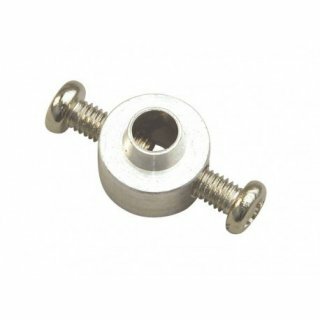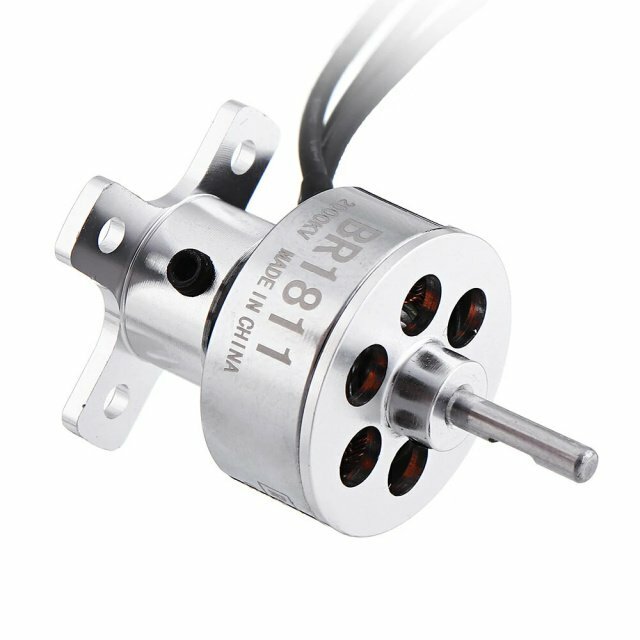
Denis Watkins
-
Posts
5,798 -
Joined
-
Last visited
Content Type
Profiles
Forums
Blogs
Gallery
Calendar
Downloads
Posts posted by Denis Watkins
-
-
Bruce, have rung a flying buddy who has the Angel, and his rudder servo is not in the tail, but behind the wing tube up front on a closed loop system.
The elevator servo is in the tail, as is yours you say.
He balanced 145mm as recommended using the battery position.
-
From the manual concerning hot running
Installation / MountingWhen installing the Unify Pro, please ensure adequate airflow and - most importantly - heat transfer. Thismeans mounting the Unify Pro with a bit of pressure against a flat piece of carbon will give you the bestresults. Proper mounting will allow the video transmitter to run for extended periods of time while sittingon the ground, both with 25mW and 200mW power levels. On 500mW / 800mW power levels, werecommend to start flying after a maximum of 1 minute, so that the airflow can begin to provide adequatecooling.When video transmitters heat up they start transmitting with less output power. There is also chance ofthe power supply circuit overheating. Don't worry, the Unify Pro will detect excess heat and shut downuntil it recovers. But that will also mean the video transmitter will not transmit. If you are experiencingthat the video transmitter shuts down, check your installation. Ensure that heat can be drained well andmake sure that there is a bit of airflow access to your VTx. -
-
16 minutes ago, Futura57 said:
After two successive weeks of crashing my 2nd Quark prototype due to dodgy Spektrum AR8000 receivers
Just check the body screws on the back of the AR8000.
They should be tiny Torx socket caphead screws in a Spektrum.
Other copies had tiny Philips screws.
-
Looking good Toto. Just a note now on setting up. We now have amazing computer radio for small increments of movement. But start off with all movement Trims at Zero.
Set the travel now mechanically to have equal throw, left and right rudder, up and down elevator, and ailerons with equal deflection.
Lots of trial and error picking optimum holes in horns and servo arms.
Only then compute the finer requirements.
-
 1
1
-
-
Also
With the computer OFF
Have the dongle plugged in to your highest rated computer USB prior to start up.
In short, have the dongle in at Start Up.
-
2 hours ago, toto said:
Excellent display of what can be achieved with the humble Boomerang in the right hands.
Toto
Have stood with two separate lads successfully taking their " B " Certificates with the Boomerang Toto,
That lovely Wing profile does actually produce lift and can be flown very well.
-
 3
3
-
-
I don't own one, but have flown one Bob, and is very agile, with the wide chord wing and short moment arm. Very good at low speed and will teach you lots.
On take off, do not hike the nose up with too much "UP" elevator as the tail will hit the ground.
Go off steady, with progressive throttle until the wing gains lift and gets it off safely; you can hike it up all you want then, when the tail is well clear of the ground.
-
-
-
We fly Indoor in 2 weeks and I will get more pics then.
these 9grm motors from Banggood are great from 6 amp to 10 amp, On 5 x 3 to 6 to 3 props from 35W to 50 Watts
I copied these ARTF in depron, using this motor
The EPP is very durable and weighs 100 grams loaded with 3 servos, Rx and 350ma lipo
I copied these ARTF in depron
-
Just looked Halsey, On YouTube
Loads of modellers showing pipe work for bench running
-
Have spent years developing indoor models just like this Tosh, and depending on average sized halls, you are in the large and fast class with this model but is doable..
The best flyers I have made are 2S two cell lipo 200 - 300mah, with small brushless outrunner, 6A - 12A ESC, at 16 - 20 inch span, and Flat bottom wing or flat plate wing for lift, weighing 3.5oz or Less !!!
Your model is flyable, but will need to be kept moving quickly with that wing profile indoors.
The 12A for 2S is ok, and the servos, but 5.5oz will fly fast
Practice outdoors 1st
-
-
Amazon Frank, but singles can be expensive. From time to time, multibuys appear with much reduced singles price.
-
Have always had small 4 strokes on the go since starting out with I/C and a 30 size, On a good day, with the wind behind it, new plug and fresh fuel develops about 370W, which leccy flyers find useful in decision making.
Best plan is to expect 300 watts at this stage so weight is as always your enemy.
Build light and strong, and enjoy these wonderful small motors.
Build around a 4oz tank, as a 30 will run economically quite a while, I land at the 12 minute buzzer.
Carry 9 x 5 - 10 x 6 props
-
 1
1
-
-
3 hours ago, Jonathan M said:
I have an OS30 four-stroke, bought new a few years ago, which I'm about to run in (and for which I'm about to build a suitable airframe).
I run 3 of this size Jonathan, in a Seagull Decathlon 40" ? span, A Seagull Jumper, and a homebuilt airframe, all around 3lb AUW and importantly found that the prop was more affective than fuel, as the same motor in 3 similar airframe would not fly on the same prop?
To comfortably fly 3lb Decathlon 9 x 5, Home built 3lb 30" 1 0 x 6, and the Jumper 9 x 6.
So as always considering fuel, try a few props too.
Found a picture. The little electric Decathlon with modified engine bulkhead
-
 1
1
-
-
-
The SB version was still online, and I thought I had cracked it.
Hobby king still have some obsolete stock item notes in Manuals and Files of the item.
-
Now you know more about the voltage drop, stop mucking about with the crystal.
Crystals are much like a lamp, with a filament, and the make and break of putting it in and out live, can collapse and break the fillament.
Crystals are quite sturdy with normal use, just don't tempt fate and enjoy the clearer airwaves
-
Am wrong
-
Can't leave this any longer David, though having no retracts and 2" less wingspan, my Flair Harvard is all wood and Solartex covered, flying at 7 lb.
Must be a similar power plant to the Brian Taylor kit, and it flys a 60 4 stroke.
Flys beautifully, but must be kept moving like most intermediate models. Where a Wot4, may give you a moment to recover on a downwind turn, flown a tad too slow, these big bodied low wingers slow down quickly, so just be aware to keep it moving until you get used to flying it.
Landing is a doddle as the wide chord wing has loads of lift, but do fly to the ground, then cut the motor.
-
Matty is most reliable with flying information Basil
But, as a Spektrum Buddy user, and of this combination
I always test the combination with another competent flyer on the SLAVE
And take note
Every single time, the DX6i has had to have some form of extra trimming.
I do suspect that the stick calibration of both DX are just not the same
As one Tx can have pots more worn than the other.
Just dry run the set up with 2 competent flyers
-
 1
1
-
-










Sebart Angel S EVO 50E
in All Things Model Flying
Posted
Good spot Bruce, one that you will never forget
The wing tube is most commonly fitted at the ( strongest ) thickest part of the wing profile which is aerodynamically too, the best place for the C of G